7 Simple Tips for a Better Remote Work-Life Balance
All work and no play make Jack… a burnt-out employee.
To be honest, when remote work culture wasn’t such a norm and was considered a rarity, I used to have a very starry-eyed view of it and felt envious of the people who were allowed to work from the comfort of their homes.
Then it finally happened to me. The opportunity to work from home. To call what happened next ‘unexpected’ would be an understatement.
Let’s just say I was in for a surprise.
The reality was a bit different from how I had envisioned the work-from-home life to be.
However, with time, experience, and some positive habits, I discovered the silver lining – that remote work comes with its own perks and benefits IF it’s tackled right.
Think to yourself: Why else would 63% of professional individuals choose remote work as the most important aspect of their job, beating out salary (61%), flexible schedules (55%), work-life boundaries (54%), and having a good boss (48%)?
However, there is no such thing as a free lunch and remote work is no exception.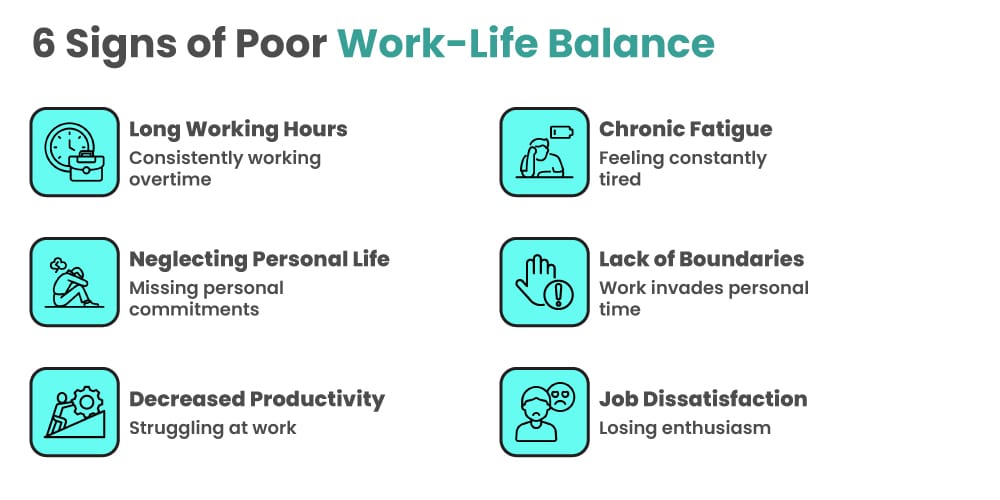
On one side, it offers great advantages like flexibility, comfort, and cost-saving, but on the flip side, the blurred line between home and work poses some seriously damaging challenges such as burnout, distraction, depression, isolation, decline in productivity, and the list goes on.
So, if your workdays look like a never-ending marathon of back-to-back Zoom meetings, skipped meals, and working till the wee hours, congratulations – you’ve officially caught a case of poor work-life balance.
But fret not.
For today I’m going to treat you with 7 super helpful tips (from my own experience) that will help you achieve a happier, healthier, and more productive work-life experience.
Let’s begin.
Work-Life Balance Tip 1: Create a Schedule and Set Boundaries
One of the most important tips for remote work-life balance is to have a clear and consistent schedule for your work hours. This will help you create boundaries between your work and personal life, and avoid working too much or too little.
Having a regular routine will also help you stay focused, productive, and motivated throughout the day.
To set a schedule and boundaries,
- You need to consider your personal preferences, your work responsibilities, and your team’s expectations.
- For example, you may prefer to work early in the morning or late at night, depending on your energy levels and other commitments.
- You may also need to adjust your schedule to accommodate meetings, deadlines, or collaborations with your colleagues.
- Whatever your schedule is, make sure to communicate it clearly to your manager, your team, and your family or friends, so they know when you are available and when you are not.
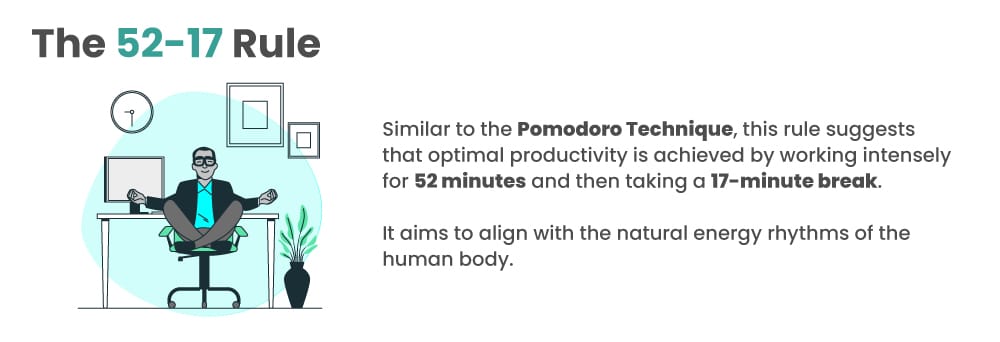
Work-Life Balance Tip 2: Create a Separate Office Space
Creating an office space that separates life from work will help you minimize distractions, and increase your concentration.
Ideally, you should have a room or a corner that is dedicated to your work, where you can set up your equipment, such as your laptop, monitor, keyboard, mouse, and headset. You should also make sure that your office space is ergonomic, well-lit, and ventilated, to avoid physical and mental fatigue.
If you don’t have an office space, you can still create some separation by using headphones, signs, or timers to indicate when you are working and when you are not.
You can also use different devices, apps, or accounts for your work and personal activities, to avoid mixing them up. For example, you can use your laptop for work and your tablet for leisure, or you can use different browsers, email addresses, or profiles for your work and personal accounts.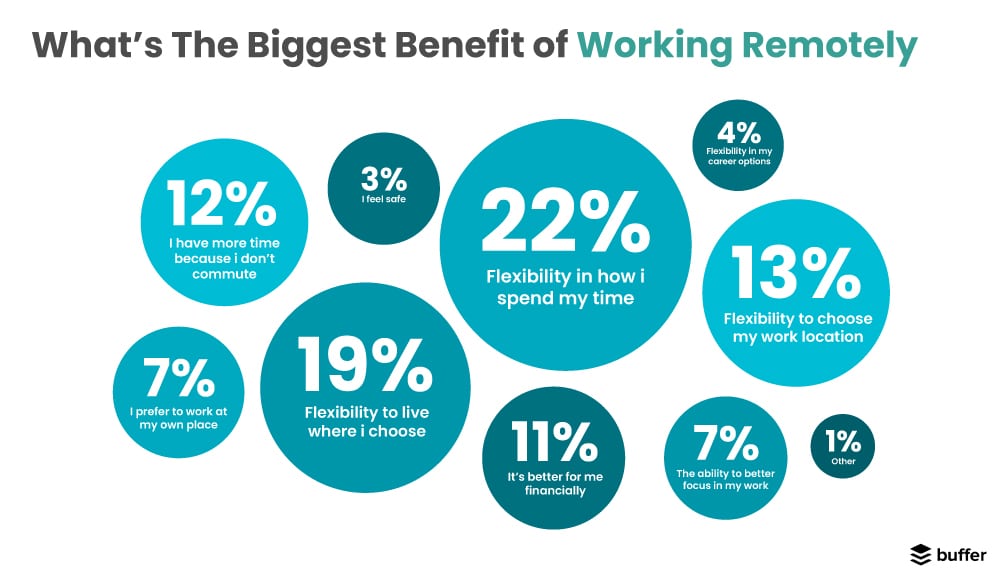
Also read: Elon Musk: A Marketing Genius or A Trickster?
Work-Life Balance Tip 3: Set Blocks Of Time For Different Tasks
This will help you organize your workflow, prioritize your goals, and focus on one thing at a time. Setting blocks of time for different tasks will also help you avoid multitasking, which can have negative effects on your performance, quality, and mental health.
Multitasking can cause you to lose focus, make more errors, waste more time, and increase your stress levels.
To improve your work-life balance, you can use various strategies, such as:
- Prioritizing your tasks based on their urgency and importance, and tackling them one by one.
- Using the Eisenhower matrix, which is a tool that helps you categorize your tasks into four quadrants: do, decide, delegate, and delete.
- Using the Pareto principle, which is a rule that states that 80% of the results come from 20% of the efforts.
- Using the SMART criteria, which is a framework that helps you set specific, measurable, achievable, relevant, and time-bound goals.
- Using the Kanban method, which is a system that helps you visualize your workflow, limit your work in progress, and optimize your efficiency.
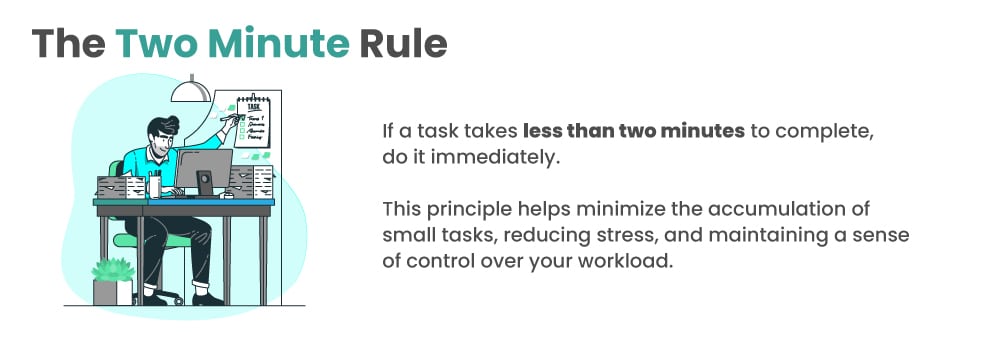
Work-Life Balance Tip 4: Escape the ‘Always On’
While being accessible and responsive is important for your work, being always on can have detrimental effects on your well-being and relationships. Being always on can cause you to feel overwhelmed, exhausted, and anxious. It can also interfere with your personal time, hobbies, and social life.
To escape the ‘always on’ mentality, you need to set some boundaries and expectations for your work communication.
To improve your work-life balance, you can use various tips, such as:
- Communicating your availability, preferences, and needs clearly and politely to your coworkers, your boss, and your loved ones.
- Turning off your work notifications, devices, or apps when you are not working, or when you need some uninterrupted time.
- Create an auto-reply message or a voicemail greeting that informs your contacts when you will be back online or available to respond.
- Scheduling some blocks of time for deep work, where you focus on your most important or challenging tasks without any distractions or interruptions.
- Scheduling some blocks of time for personal or family activities, where you disconnect from your work and enjoy your hobbies, interests, or relationships.
Work-Life Balance Tip 5: Prioritize Regular Breaks, Don’t Skip Meals and Move Your Body
This will help you refresh your mind, reduce stress, and boost your creativity. Prioritizing regular breaks, not skipping meals, and moving your body will also help you improve your physical and mental health, and prevent fatigue, hunger, and mood swings.
To improve your work-life balance, you can use various tips, such as:
- Setting a timer or an alarm to remind you to take a break every 25, 50, or 90 minutes, depending on your preference and workload.
- Using the Pomodoro technique, which involves working for 25 minutes, then taking a 5-minute break, and repeating this cycle four times, before taking a longer break of 15 to 30 minutes.
- Doing some stretches, yoga, or exercises during your breaks, or joining an online fitness class or a virtual workout with your colleagues or friends.
- Walking around your house, your neighborhood, or your nearby park, while listening to music, podcasts, audiobooks, or making phone calls.
- Having a healthy snack, a glass of water, or a cup of tea or coffee during your breaks, to keep yourself hydrated and energized.
Eating a balanced and nutritious meal at regular intervals, and avoiding junk food, alcohol, or caffeine, to nourish your body and maintain your blood sugar levels.
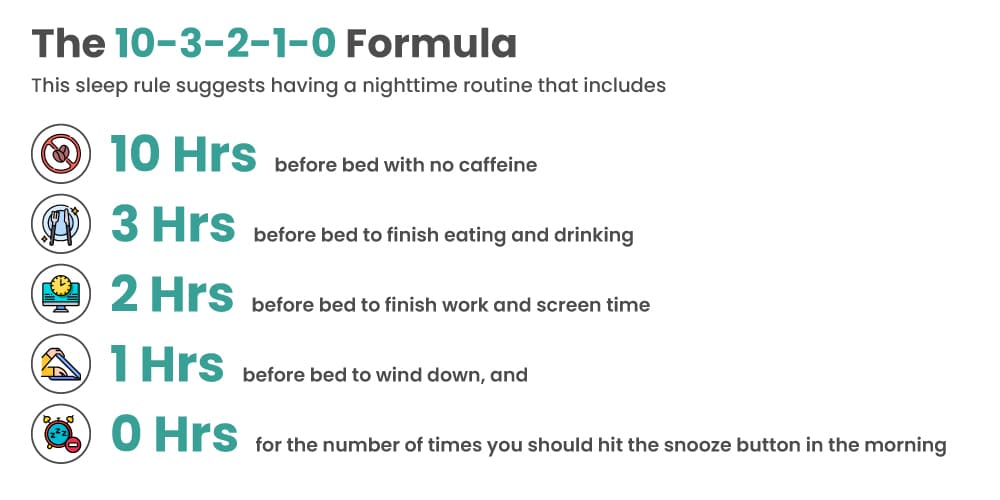
Work-Life Balance Tip 6: Build Transitions Into And Out Of Work
This will help you switch between your work and personal modes, and prepare yourself mentally and emotionally for the day ahead or the evening behind. Building transitions into and out of work can help you avoid blurring the lines between your work and life.
To improve your work-life balance, you can use various tips, such as:
- To wake up your body and mind and set a positive tone for the day, have a morning routine that does not center around work.
- Have an evening routine with post-work activities that you truly enjoy. This will help you unwind, relax, and recharge after a long and stressful day.
- Explore the power of the “faux commute”, which is the act of simulating a commute to and from your work, even if you are working from home, to transition between your work and personal modes, and reclaim some time for yourself.
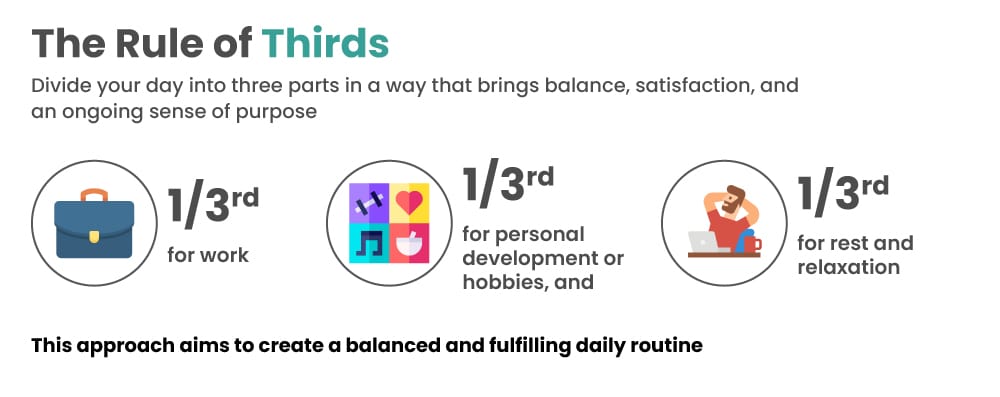
Work-Life Balance Tip 7: Don’t Sweat The Small Stuff
Focus on the big picture, the things that matter, and the things that you can control. Doing this will help you cope with challenges, and avoid unnecessary stress, frustration, or anger.
To improve your work-life balance, you can use various tips, such as:
- Practicing mindfulness, which is the act of paying attention to the present moment, without judgment or reaction.
- Practicing acceptance, which is the act of acknowledging the reality of a situation, without resistance or denial.
- Practicing detachment, which is the act of letting go of the things that you cannot change, influence, or control.
- Practicing optimism, which is the act of looking at the bright side of things, without ignoring or minimizing the negative aspects.
- Practicing gratitude, which is the act of being thankful for the things that you have, without taking them for granted or complaining about them.
Bonus Tip for a Better Work-Life Balance:
Give Yourself A Monthly Check-In To Avoid Remote Work Burnout
Ever wake up feeling like you’ve run a marathon, only it’s just the start of your workday? You might be headed for burnout. Keep an eye on these signs:
- Waking up tired, as if your sleep is on vacation.
- Tasks that once sparked joy now feel more like a never-ending to-do list.
- Snapping at the small stuff—because everything feels like the last straw.
- A constant feeling of running but not getting anywhere, despite your best efforts.
If you’re nodding along, it’s time to hit pause and recalibrate. Start by acknowledging your challenges and difficulties, and seek help or support when you need it.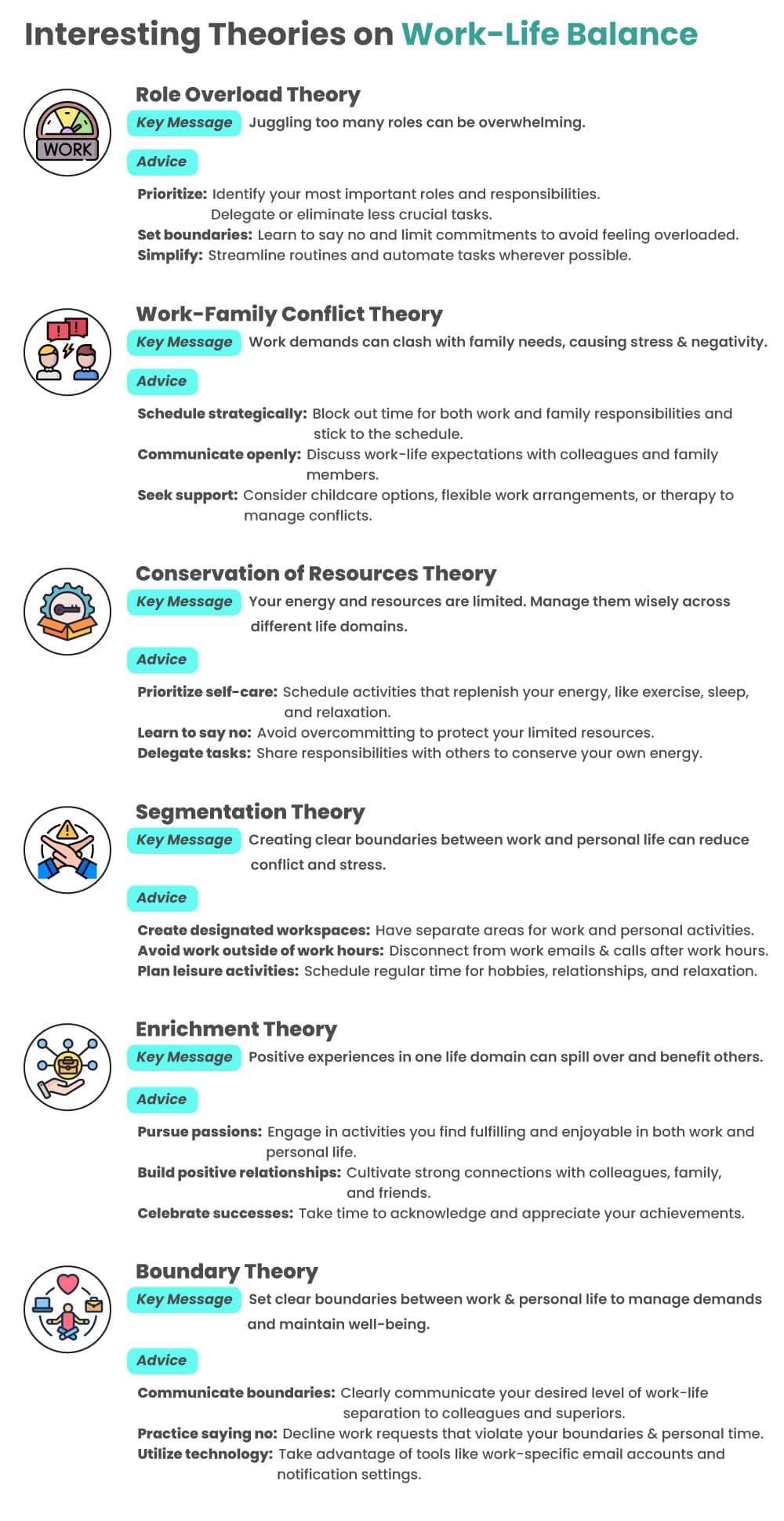
Lastly…Take Time To Decompress
Taking time to decompress will help you avoid burnout, anxiety, or depression that may result from working remotely. This can help you heal your body and mind, improve your mood, and help you release tension, and restore your work-life balance.
To improve your work-life balance, you can do various activities, such as:
- Meditating, breathing, or journaling, to clear your mind, relax your body, and express your feelings.
- Reading, writing, or drawing, to stimulate your imagination, unleash your creativity, and enjoy your hobbies.
- Listening to music, watching movies, or playing games, to entertain yourself, have some fun, and escape from reality.
- Cooking, baking, or gardening, to nourish your body, satisfy your senses, and appreciate nature.
- Pamper yourself, such as taking a bath, getting a massage, or applying a mask, to treat yourself, boost your confidence, and feel good.
Remember, working from home can be a blessing or a curse, depending on how you manage it. However, by following these 7 effective tips, you can achieve a better remote work-life balance, and enjoy the best of both worlds.
As the famous quote wisely puts it, “Work hard, play hard, and live well.” So make sure that you find a balance between your work commitments and taking time for yourself, for in this balance, you’ll discover the true essence of a well-lived life.
Also read: How to Create a Gen Z Friendly Brand
Want more of these thoughtful opinions and reflections? Check them out here.

